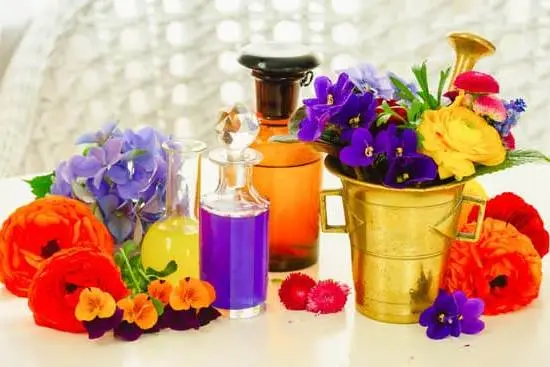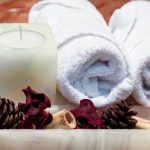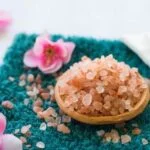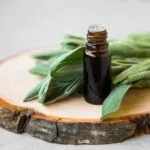Can you put juice in an aromatherapy diffuser? Aromatherapy diffusers are widely used to disperse essential oils into the air, providing a myriad of therapeutic benefits. The use of essential oils in aromatherapy has been shown to reduce stress, improve sleep quality, and promote relaxation. The purpose of this article is to explore the potential risks and benefits of using juice in an aromatherapy diffuser and to address common misconceptions surrounding this practice.
Aromatherapy diffusers come in various types, including ultrasonic, nebulizing, heat, and evaporative diffusers. Each type offers unique features and benefits for dispersing essential oils effectively. However, it is important to understand that not all substances are suitable for use in these devices. While essential oils are commonly used, there have been questions about the use of other liquids such as juice in these diffusers.
In this article’s subsequent sections, we will delve into the specific types of aromatherapy diffusers available on the market, their respective benefits and limitations, and the potential effects that using juice may have on these devices. Additionally, we will discuss safety concerns associated with using non-traditional liquids in aromatherapy diffusers and offer alternative ingredients for creating a pleasant aroma without compromising the device’s performance or safety.
Types of Aromatherapy Diffusers
Aromatherapy diffusers are popular devices used to disperse essential oils into the air, filling a room with a pleasant and therapeutic aroma. There are several types of aromatherapy diffusers available on the market, each with its own unique method of dispersing essential oils. Understanding the differences between these diffusers can help individuals choose the right option for their needs.
1. Ultrasonic Diffusers: These diffusers use ultrasonic vibrations to create a fine mist of essential oil and water that is released into the air. They are popular for their ability to also humidify the air, making them ideal for dry climates or winter months.
2. Nebulizing Diffusers: Nebulizing diffusers do not require water or heat and instead utilize pressurized air to break down essential oils into tiny particles, which are then released as a fine mist. This type of diffusion is often considered the most potent and therapeutic, as it does not alter the chemical composition of the essential oils.
3. Heat Diffusers: Heat diffusers use heat from a candle or electric source to gently warm and evaporate essential oils into the air. While they are simple and affordable, some argue that heat may alter the beneficial properties of certain essential oils.
4. Evaporative Diffusers: These diffusers use a fan to blow air through a pad or filter that has been soaked in essential oils, causing the oil to evaporate more quickly than it would on its own.
Understanding these different types of aromatherapy diffusers can help individuals make an informed decision when selecting a device for their home or office. Each type has its own unique set of benefits and drawbacks, so it’s important to consider factors such as ease of use, maintenance requirements, and desired level of fragrance intensity before making a purchase.
Ultimately, choosing the right aromatherapy diffuser is a personal decision that depends on individual preferences and needs. Whether one prefers the gentle mist produced by an ultrasonic diffuser or the potent aroma emitted by a nebulizing diffuser, there are various options available for creating a soothing atmosphere at home or work.
Can You Put Juice in an Aromatherapy Diffuser
Aromatherapy diffusers are commonly used to disperse essential oils into the air, providing numerous benefits such as improved mood, relaxation, and even relief from certain health issues. However, some individuals may wonder if they can use alternative substances, such as juice, in their aromatherapy diffuser. In this section, we will explore the potential risks and benefits of using juice in a diffuser and address common misconceptions surrounding this practice.
Potential Risks of Using Juice in a Diffuser
While it may be tempting to experiment with different liquids in an aromatherapy diffuser, using juice can actually pose several risks. Juices contain sugars and other compounds that may not evaporate properly and could potentially clog or damage the delicate mechanisms of the diffuser. Additionally, the acidic nature of some juices can corrode the internal components of the diffuser over time.
Benefits of Using Juice in a Diffuser
Despite the potential risks, there are some perceived benefits to using juice in an aromatherapy diffuser. Some individuals believe that using fruit juices can create a pleasant aroma and provide additional therapeutic benefits beyond what essential oils offer. However, it is important to note that these claims are not scientifically proven and should be approached with caution.
Addressing Common Misconceptions
It is common for people to assume that since essential oils come from plant extracts, other natural liquids like juice would also work well in an aromatherapy diffuser. However, the process of diffusing oils is specifically designed for substances with certain molecular structures that allow them to be dispersed effectively without causing harm to the device or its users.
It’s important to understand that while essential oils have been extensively studied for their therapeutic properties, vegetable and fruit juices have not undergone similar scientific scrutiny for inhalation purposes.
Effects on the Diffuser
Using juice in an aromatherapy diffuser may seem like a creative way to add a pleasant scent to your home, but it can have negative effects on the diffuser itself. Here are some ways that using juice in a diffuser can impact its performance and lifespan:
1. Residue Build-Up: When juice is used in an aromatherapy diffuser, it can leave behind a sticky residue that can clog the device’s ultrasonic plate or nebulizing mechanism. This build-up can affect the effectiveness of the diffuser in dispersing essential oils and may even lead to mechanical issues over time.
2. Corrosion: Some juices contain acidic substances that can corrode the internal components of an aromatherapy diffuser, especially if it is not designed to handle liquid other than water and essential oils. This corrosion can damage the device and shorten its lifespan.
3. Mold Growth: Juice contains sugars and other organic materials that can promote mold growth within an aromatherapy diffuser. This can not only affect the device’s performance but also pose potential health risks for users.
To avoid these negative effects, it is important to use only water and essential oils in your aromatherapy diffuser as recommended by the manufacturer. Additionally, regular cleaning and maintenance of the device can help prolong its lifespan and ensure optimal performance.
To continue enjoying a pleasant aroma in your home without damaging your diffuser, consider using safe alternatives such as citrus peels, herbs, or floral waters. These natural ingredients can provide a similar aromatic experience without posing any risks to the device or your health.
Safety Concerns
When it comes to using an aromatherapy diffuser, it is important to consider the safety implications of using unconventional ingredients such as juice. While essential oils are commonly used in diffusers for their therapeutic benefits, some individuals may wonder if they can put juice in an aromatherapy diffuser as an alternative. However, it is crucial to note that juice is not suitable for use in a diffuser due to several potential safety hazards.
First and foremost, using juice in an aromatherapy diffuser can lead to clogging and damaging the internal components of the device. Most diffusers are designed specifically for use with essential oils, which have a much thinner consistency compared to juice.
The thicker texture of juice can create build-up and blockages within the diffuser, ultimately affecting its performance and longevity. Additionally, the sugars and other natural compounds found in juice can leave residues that are difficult to clean and may breed bacteria over time.
Moreover, the use of juice in an aromatherapy diffuser can pose fire risks due to its flammable nature when exposed to heat or electric components within the device. This presents a significant safety concern for users and increases the likelihood of accidents or malfunctions. Therefore, it is highly recommended to refrain from putting any type of juice into an aromatherapy diffuser and instead explore safe alternatives to create a pleasant aroma.
| Potential Safety Hazards | Recommended Alternatives |
|---|---|
| Clogging and damaging internal components | Essential oils, water-based fragrances |
| Fire risks due to flammability | Natural oil blends (lavender, eucalyptus), citrus peels or herbs |
Alternative Ingredients
While essential oils are the most commonly used ingredients in aromatherapy diffusers, there are other safe and effective alternatives that can be used to create pleasant scents in your environment. These alternatives can provide similar benefits to essential oils without compromising the performance or lifespan of your diffuser.
One alternative to using juice in an aromatherapy diffuser is using floral waters or hydrosols. These are produced during the steam distillation of plant materials for essential oil extraction and carry the same aromatic properties as essential oils. In addition, they are much gentler on the diffuser and do not leave behind residue that could affect its functionality.
Citrus zest can also be used as an alternative ingredient for aromatherapy diffusion. The peels of citrus fruits contain natural oils that can be released into the air through a diffuser, providing a refreshing and uplifting aroma. This method is safe for your diffuser and leaves behind a pleasant scent without causing any damage.
| Alternative Ingredients | Description |
|---|---|
| Floral Waters/Hydrosols | Produced during steam distillation, gentle on diffuser, similar benefits to essential oils |
| Citrus Zest | Natural oils from citrus peels, refreshing and uplifting aroma, safe for diffuser |
Tips for Proper Diffuser Use
Proper Maintenance
To ensure that your aromatherapy diffuser functions properly and lasts a long time, it’s important to maintain it regularly. This includes cleaning the diffuser after each use to prevent the build-up of oils and residue. Follow the manufacturer’s instructions for cleaning and be sure to use a non-abrasive cleaner to avoid damaging the diffuser.
Use Distilled Water
When filling your aromatherapy diffuser, it is recommended to use distilled water rather than tap water. Using tap water can lead to mineral build-up in the diffuser, affecting its performance over time. Additionally, using distilled water can help maintain the integrity of essential oils and prevent any chemical reactions that may occur with impurities in tap water.
Monitor Usage Time
It’s important to pay attention to the recommended usage time for your specific aromatherapy diffuser. Overusing the diffuser can lead to overheating or damage, so be mindful of how long you run it for. Most diffusers have a built-in timer or auto-shut off feature, but it’s still best practice not to leave it on for extended periods.
By following these tips for proper diffuser use and maintenance, you can ensure that your aromatherapy diffuser operates safely and effectively. Taking care of your diffuser will not only prolong its lifespan but also enhance your overall aromatherapy experience. Remember, using an aromatherapy diffuser responsibly is key to reaping the benefits of essential oils and creating a soothing environment in your home or office.
Conclusion
In conclusion, while the question “can you put juice in an aromatherapy diffuser” may arise, it is important to remember that the purpose of an aromatherapy diffuser is to disperse essential oils into the air for therapeutic benefits. Using juice in a diffuser can have potential negative effects on its performance and lifespan, as well as pose safety hazards. It is crucial to use the diffuser responsibly and with proper ingredients to ensure both effectiveness and safety.
When considering using an aromatherapy diffuser, it is essential to choose the right type of diffuser for your needs, such as ultrasonic, nebulizing, heat, or evaporative diffusers. Additionally, it is important to understand the potential risks and benefits of using juice in a diffuser and address common misconceptions about alternative ingredients. While juice may seem like a harmless option for creating a pleasant aroma, it can actually damage the diffuser and compromise its function over time.
For those seeking safe and effective alternatives to juice for use in an aromatherapy diffuser, there are plenty of options available. Essential oils such as lavender, peppermint, eucalyptus, and citrus oils are popular choices for their natural fragrance and therapeutic properties.
It is crucial to prioritize the proper maintenance and usage tips to ensure optimal performance of the aromatherapy diffuser while also prioritizing safety. Ultimately, by following these guidelines and utilizing essential oils responsibly, individuals can experience the full benefits of aromatherapy without compromising their health or well-being.
Frequently Asked Questions
Can You Put Other Liquids in a Diffuser?
It is not recommended to put other liquids in a diffuser meant for essential oils. Diffusers are designed specifically for the purpose of dispersing essential oils, and using other liquids may damage the equipment or affect its functionality.
Can I Put Something Other Than Essential Oils in My Diffuser?
Using anything other than essential oils in a diffuser can be harmful to the device. Substituting essential oils with other liquids could lead to clogging, corrosion, or malfunction of the diffuser. It’s best to stick with the intended use of the product.
What Liquid Goes in a Diffuser?
The only liquid that should go in a diffuser is essential oil, as it is specifically designed to work with this type of liquid. Essential oils are derived from natural sources and are meant to be dispersed through the air in small amounts for aromatherapeutic purposes.

Are you looking for a natural way to improve your health and wellbeing?
If so, aromatherapy may be the answer for you.






